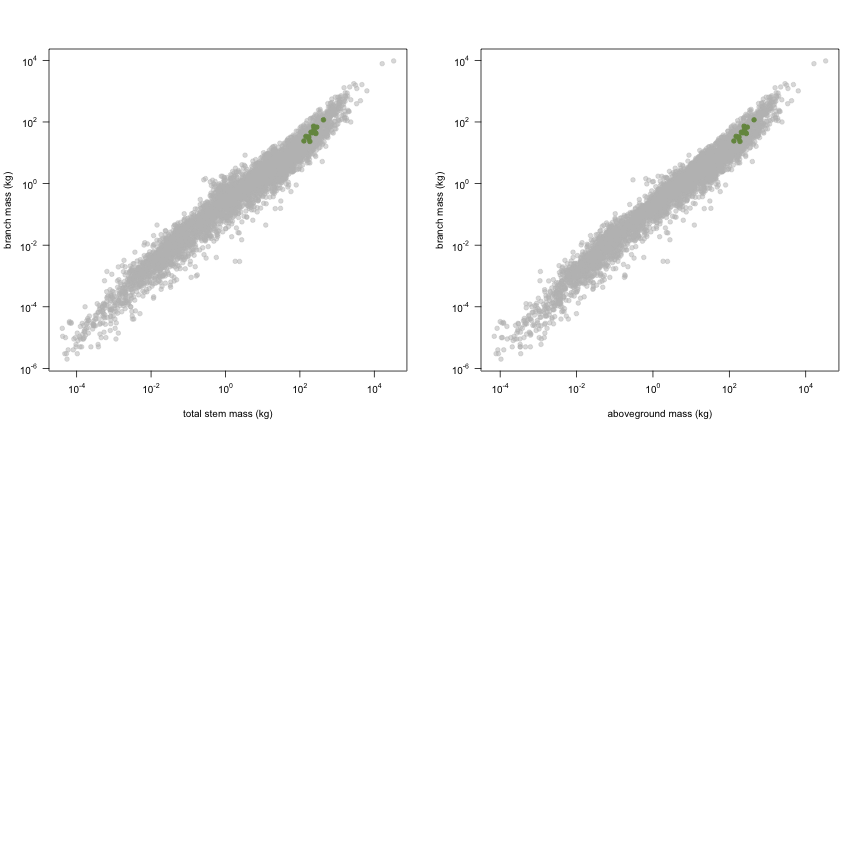-
Notifications
You must be signed in to change notification settings - Fork 19
Hashizume1985
Data contributor: Masae I. Ishihara, Hajime Utsugi, Hiroyuki Tanouchi, Tsutom Hiura
Email: [email protected]
Address:
- Graduate School for International Development and Cooperation, Hiroshima University, 1-5-1 Kagamiyama, Higashi-Hiroshima 739-8529, Japan
- Forestry and Forest Products Research Institute (FFPRI), 1 Matsunosato, Tsukuba, Ibaraki, 305-8687, Japan
- Hokkaido Research Center, Forestry and Forest Products Research Institute (FFPRI), Hitsujigaoka-7, Toyohira, Sapporo, Hokkaido, 062-8516, Japan
- Tomakomai Research Station, Field Science Center for Northern Biosphere, Hokkaido University, Takaoka, Tomakomai 053-0035, Japan
Citation: Hashizume H (1985). 'Studies on the improvement of the secondary forest of broad-leaved trees (II) The effect of improvement cutting and manuring on the growth of the secondary forest of Kunugi (Quercus acutissima Carruth.) .' Bulletin of the Faculty of Agriculture, Tottori University, 38, pp. 60-67.
DOI:
Abstract:
The dataset includes records for 15 individuals from 1 species belonging to 1 family(ies), presenting 1 functional type(s), growing in 1 condition(s) within 1 major type(s) of habitat, with data included for the following variables:
| Variable | Label | Units | N | Min | Median | Max |
|---|---|---|---|---|---|---|
| latitude | Latitude | deg | 15 | 35 | 35 | 35 |
| longitude | Longitude | deg | 15 | 134 | 134 | 134 |
| age | Age | yr | 15 | 40 | 47 | 55 |
| a.stbh | Stem area at breast height | m2 | 15 | 0.025 | 0.035 | 0.062 |
| a.cp | Crown area | m2 | 15 | 11 | 15 | 26 |
| h.t | Height | m | 15 | 13 | 16 | 17 |
| h.c | Height to crown base | m | 15 | 4.1 | 6.2 | 7.8 |
| d.bh | Dbh | m | 15 | 0.18 | 0.21 | 0.28 |
| h.bh | Height of d.bh measurement | m | 15 | 1.3 | 1.3 | 1.3 |
| d.cr | Crown width | m | 15 | 3.8 | 4.4 | 5.8 |
| c.d | Crown depth | m | 15 | 7 | 9.1 | 12 |
| m.lf | Leaf mass | kg | 15 | 3.2 | 8.5 | 13 |
| m.st | Total stem mass | kg | 15 | 128 | 222 | 430 |
| m.so | Aboveground mass | kg | 15 | 131 | 232 | 444 |
| m.br | Branch mass | kg | 15 | 23 | 45 | 117 |

And locally within the country:

The sites sampled are:
| Location | Longitude | Latitude | Vegetation |
|---|---|---|---|
| Japan-Hiruzen Forest of Tottori Univeristy-Natural forest | 133.6 | 35.3 | Temperate forest |
| Japan-Hiruzen Forest of Tottori Univeristy-Selective cutting, non-fertilized plot | 133.6 | 35.3 | Temperate forest |
| Japan-Hiruzen Forest of Tottori Univeristy-Selective cutting, fertilized plot | 133.6 | 35.3 | Temperate forest |
The growing conditions of sampled plants was:
| Location | growingCondition |
|---|---|
| Japan-Hiruzen Forest of Tottori Univeristy-Natural forest | field wild |
| Japan-Hiruzen Forest of Tottori Univeristy-Selective cutting, non-fertilized plot | field wild |
| Japan-Hiruzen Forest of Tottori Univeristy-Selective cutting, fertilized plot | field wild |
| Species | Family | Pft |
|---|---|---|
| Quercus acutissima | Fagaceae | deciduous angiosperm |
Sampling strategy: Survey was conducted in three plots in a secondary oak forest about 40-years old in August 1984 (Hashizume 1985). Two plots were heavily thinned in 1978 to make them into Quercus acutissima dominant stands and the density was 600 trees/ha in 1984. Fertilizer of 3-5 kg/tree (N: P: K = 13: 17: 12, %; 900-1500 kg/ha) was applied to one of two plots for three years after thinning. Third plot was untreated control with density of 800-1000 trees/ha in 1984. After 6 years, in 1984, 15 sample trees, 5 from each plot, were selected to represent averaged size. Method of biomass measurement was the same as Hashizume and Kodani (1985, Studies on the improvement of the secondary forest of broad-leaved trees (I) The effect of improved cutting on the growth of the secondary forest of Buna (Fagus crenata Blume). Bull. Fac.Agric. Tottori Univ. 38: 51-59). Sample trees were felled after the measurement of diameter at breast height, tree height, and height of the lowest living branch.
Height: Measured before sample trees were felled (Hashizume and Kodani 1985).
Biomass: Fresh mass of stem, branches, leaves, and fruits were measured. Measured fresh mass was converted to dry mass from the ratio of dry to fresh mass (Hashizume and Kodani 1985). The ratio was estimated from subsamples which were oven-dried at 100 degrees C.
Other variables: M.I. Ishihara, H. Utsugi, H. Tanouchi, and T. Hiura conducted formal search of reference databases and digitized raw data from Hashizume (1985). Based on this reference, meta data was also created by M.I. Ishihara. Species name and family names were converted by M.I. Ishihara according to the following references: Satake Y, Hara H (1989a) Wild flower of Japan Woody plants I (in Japanese). Heibonsha, Tokyo; Satake Y, Hara H (1989b) Wild flower of Japan Woody plants II (in Japanese). Heibonsha, Tokyo.
This is how the study Hashizume1985 fits in the entire dataset (grey). each colour represents a species. A legend of species names with colours is included at the end for reports with 1 < n < 20 species.



















